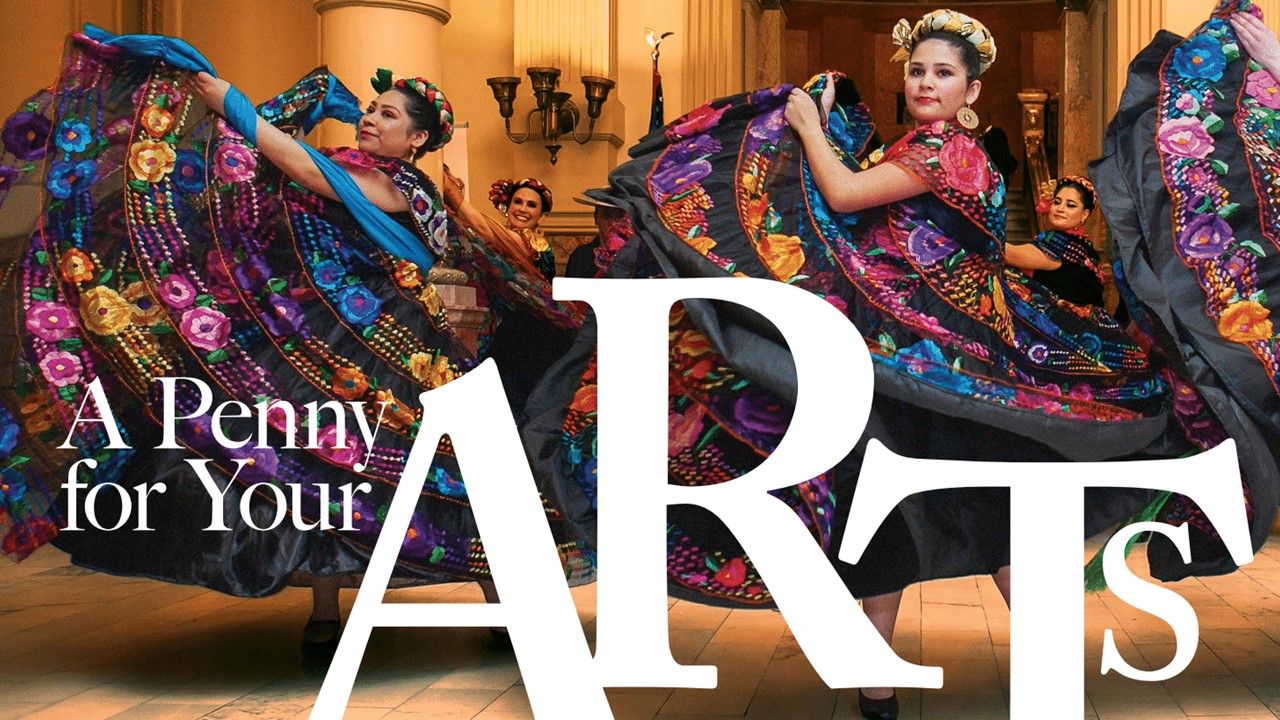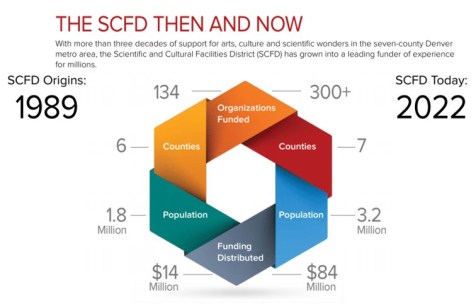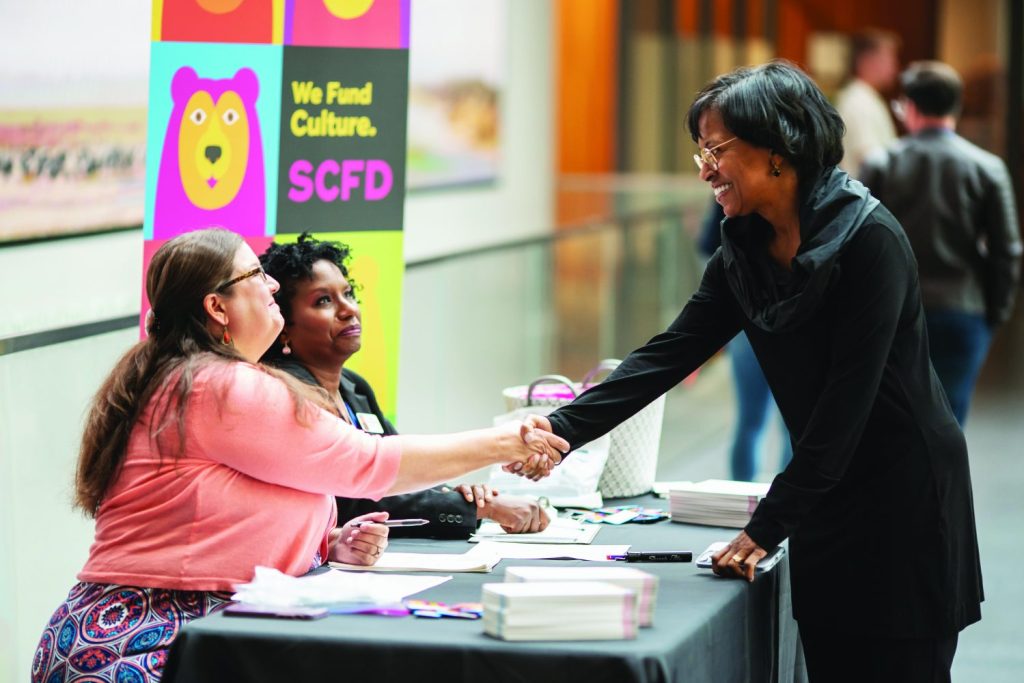
This article originally appeared in Museum magazine’s September/October 2023 issue, a benefit of AAM membership.
The Denver arts and cultural community has built an ecosystem that encourages voters to fund its work, one penny at a time.
The 1980s were tough times in Denver.
After a more than decade-long oil boom in Colorado, the bottom had officially fallen out. Skyscrapers that had begun to sprout in place of the older western-style architecture on the city’s south end were suddenly halted. New suburban housing sprawl on the city’s east and west slowed to a crawl.
Leaders were struggling to fund just about every city need. Among the assets the city held were its five cultural gems: the Denver Art Museum, the Denver Botanic Gardens, the Denver Museum of Nature and Science, the Denver Center for the Performing Arts, and the Denver Zoo. These nationally recognized institutions were in real danger: at various points, it was unclear whether there would be enough money to feed the animals at the zoo or maintain the mechanical systems that protected priceless works of art.
Civic leaders closely tied to theater, opera, the symphony, visual arts, and every other major cultural institution hatched what seemed like a crazy plan. They would ask voters to create a taxing district and use that dedicated revenue stream to fund arts and culture.
This was crazy for many reasons. First, Colorado as a state was in economic turmoil. What could possibly motivate people to vote for an additional tax during a time of economic decline in a state that was, at that point, reliably anti-tax? And second, the most feasible way to get the measure onto the ballots of the initial six counties was a referral by the state legislature to those ballots. At the time, both chambers of the Colorado legislature were controlled by the Republican Party, which was traditionally opposed to tax measures.
Seemingly against all odds, and after multiple legislative sessions, state lawmakers referred the measure to the voters in 1988, and they approved the tax. The Denver Metro Scientific and Cultural Facilities District (SCFD) launched operations in 1989. In its first year, the six-county taxing district of about 1.8 million residents raised $14 million in support of 134 organizations. Today, more than three decades later, the district provides about $84 million to more than 300 organizations.
How the SCFD Works
As lawmakers worked to pass the measure and move it to local ballots, they made refinements to ensure the district had something to offer every county and all voters. In the end, leaders settled on the following general structure:
A single, six-county metro sales tax district that collects one penny for every $10 spent in sales tax and provides that revenue as general operating support for eligible arts, cultural, and scientific organizations. Organizational eligibility includes specifics on amount of programming, nonprofit status, and years in operation.
A small administrative staff that oversees the distribution of the collected taxes based on a formula that includes specific percentages for the largest organizations, a sliding percentage for regional organizations, and a lump sum to counties for local grant making.
County cultural councils, overseen by county commissioners that make funding decisions for the local organizations that apply.
Initially, the legislation set a 10-year sunset period for the tax. Once the district was up and running, supporters and leaders in the arts and culture sector realized they needed to cultivate an ecosystem that could amplify the work the funded organizations were doing to maintain the goodwill of both legislators and voters for future ballot measures.
The group that carried out the initial campaign, Citizens for Arts to Zoo, formalized its structure by becoming a 501(c)(4)—a nonprofit social welfare organization—and met regularly to discuss the district’s impact and fundraising strategy to ensure continued support for future ballot campaigns. Because Colorado taxing districts are statutorily prohibited from engaging in political activities, a fully separate entity that could carry out those activities was created. To date, three successful reauthorization campaigns have been conducted; in the most recent one, in 2016, voters approved the district by nearly 63 percent and extended the district’s sunset period to 12 years.
Focusing on Capacity Building

As the political aspects of reauthorizing the district were developed during the first campaign, cultural and civic leaders recognized the importance of defining the economic benefits of arts and supporting capacity building among the funded organizations.
The funded organizations identified marketing and education as their main capacity-building need. Many of the organizations had few marketing dollars and limited staff capacity and expertise to manage marketing campaigns. These same organizations also wanted to provide educational programming for schools but didn’t have the experience or relationships within the school districts. Colorado maintains a largely decentralized public education system that includes 179 school districts with autonomous, elected school boards.
A few years after the district was created, the funded groups pooled resources and relationships to form The Collaborative of the SCFD, a nonprofit organization that allowed the groups to expand their expertise. The new organization also had the important byproduct of encouraging collaborations of all kinds across organizations and arts and culture disciplines. These collaborations include efforts connecting Denver’s larger national venues with smaller, community-based organizations as well as unexpected cross-discipline experiences.
Now almost 30 years old, The Collaborative now has a formal structure, overseen by a board of organizational representatives and operating on membership fees from organizations based on their size. Pre-pandemic, funded organizations touched every school in every school district in the now seven-county Denver metro area. In-school programming has included everything from live cultural performances to science-based classroom presentations and curriculum.
While programming has not fully returned to pre-pandemic levels due to ongoing school restrictions and organizational capacity loss, the rebuilding is well underway. The need is clear: voters in each of the seven districts identified educational programming as a primary reason they supported the district tax.
Engaging Critical Partners
In addition to creating an internal structure to support capacity building, district founders and leaders knew they needed to engage the business community to ensure its support for the district. To achieve this, leaders partnered with the Colorado Business Committee for the Arts, founded in 1985, to highlight the regional economic value of the arts. Today, the Colorado Business Committee for the Arts conducts a biannual economic study to quantify the district’s economic impact, including job creation, economic activity, cultural tourism impact, as well as a host of other factors like general attendance and volunteerism.
The SCFD leadership continues to maintain strong relationships with state lawmakers, county commissioners, and city council members as well as other civic groups. In addition, organizations that receive funding from the district—many of the most beloved events, facilities, and experiences in the state—support ongoing efforts to elevate the visibility and value of the district through, among other things, signage and information about the district in their venues and digital spaces, curtain speeches that remind attendees of their part in funding culture, and regular updates in newsletters.
Residents and the cultural community have understood the district’s value for decades. But its specific and foundational importance was put in stark relief when many organizations in Colorado had to cease operations during the pandemic. During the two years of closure or restricted attendance, the SCFD provided about $75 million annually in general operating support to its funded organizations. This proved to be a lifeline that kept arts and culture alive in the Denver metro area and aided in the recovery of hundreds of organizations, particularly the smaller ones that are the cultural backbone of their community and neighborhood.
The SCFD’s history and resilience demonstrate the transformative power of consistent and sustained investment in arts and culture. From its origin in difficult times, the district has contributed to the well-being of the Denver metro area, serving as a testament to the value of arts and culture for all.

The SCFD Then and Now
With more than three decades of support for arts, culture and scientific wonders in the seven-county Denver metro area, the Scientific and Cultural Facilities District (SCFD) has grown into a leading funder of experience for millions.







